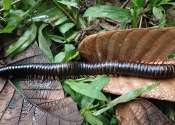Important region of marine ecosystem in Southwest Atlantic is shallower than expected, study finds
Researchers at the Federal University of São Paulo (UNIFESP) and the University of São Paulo (USP) have determined, for the first time with precision, the vertical limits of the marine environments in the Southwest Atlantic, ...









